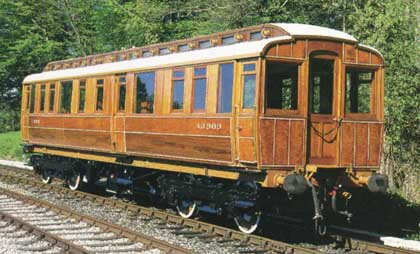

Founded 1953
The Bluebell Railway
Madge Bessemer granddaughter of Henry Bessemer, who introduced his process for making steel from pig iron, lived at North Chailey, close to the East Grinstead-Lewis Line. An agreement dating from 1905 with the LBSCR permitted a private gate from the Bessemer house, which allowed easy access to the local station.
Deemed as a loss maker, the line was proposed for closure on May 28th, 1955 – but BR and the BTC had not reckoned on a battle with the astute Miss Bessemer. For it was Madge who discovered in the original Act of Parliament that the line had to run four trains a day and could not be legally closed at the whim of the BTC.
Although services were withdrawn on the said day, the BTC was forced to reinstate trains which it did in August 1956. Predictably, the pathetic service, nicknamed the sulky service, ran at inconvenient times for connections at East Grinstead to and from London. BR then had to go through the statuary motions of getting the services withdrawn once more. This finally happened on March 16, 1958.
The debacle had attracted national media attention, and with the efforts of the Talyllyn and Ffestiniog in mind, three students discussed creating the Lewes and East Grinstead Railway Preservation Society and running summer weekend trains.
After a local newspaper had nicknamed the scheme the Bluebell Line, further local publicity about a possible re-opening led to a trackbed walk between Horsted Keynes and Newark and Chailey, followed by an initial meeting at Haywards Heath on March 15th 1959, chaired by British Railways (BR) employee, Bernard Holden, who was later to become Bluebell General Manager.
Raising £6 from a whip round for the Society’s funds, their next stop was a meeting with Southern Region Management at Waterloo. The line from Horsted Keynes to Culver Junction, was offered to the Society for £55,000, although the RM for August 1959 records that Horsted Keynes to Sheffield Park was made available for £34,000, it was the latter section which the newly formed Bluebell Railway opted for, leasing the line for five years at £2,500 per year.
In May 1960, the Railway acquired former LBSCR Terrier No 55 Stepney, which was delivered to Horsted Keynes, and with the arrival at the end of June of P Class 0-6-0T No 323, services started on August 7th, following the approval of a light railway order. Because there was no run-round loop, trains ran top and tailed. Incidentally, the cost of the two locos, together with two coaches from BR set the railway back the princely sum of £1783 and 17 shillings!
Initially, BR refused to let Bluebell Trains into Horsted Keynes platforms and so the Preservationists were forced to build Bluebell Halt, south of the junction to Ardingley, which was still used by trains, but was closed and lifted in 1963. BR did relent and allowed the Bluebell to use one platform at Horsted Keynes, but insisted on a pilotman between the Halt and the main station, which, not surprisingly, did not come free. The belief that volunteers could successfully take over the line was rewarded when at the AGM it was revealed that despite starting late in the season, 15,023 passengers were carried in just 3 months, bringing in £l,136. For the following season, four metropolitan railway coaches were acquired displaced from the Chesham Branch, and arrived at Sheffield Park in March, for the April 1st start to the new timetable, operating six trains a day, at weekends and Bank Holidays.
As time progressed and the popularity of the line increased, additional locomotives arrived, including ex-GNR J552 0-6-0ST No 1247, which had been bought by Captain Bill Smith from BR in 1959 and was the first locomotive to be preserved privately. Negotiations with the BTC were ongoing over the sale of Adams Radial 4-4-2T No 30583 and North London 0-6-0T No 58850 for which around £2,000 was needed to secure them. The lines that had been preserved so far, or schemes in their infancy, had all focussed on scenic lines, but in Leeds, that was about to change.
More information can be found at this website www.bluebell-railway.co.uk

